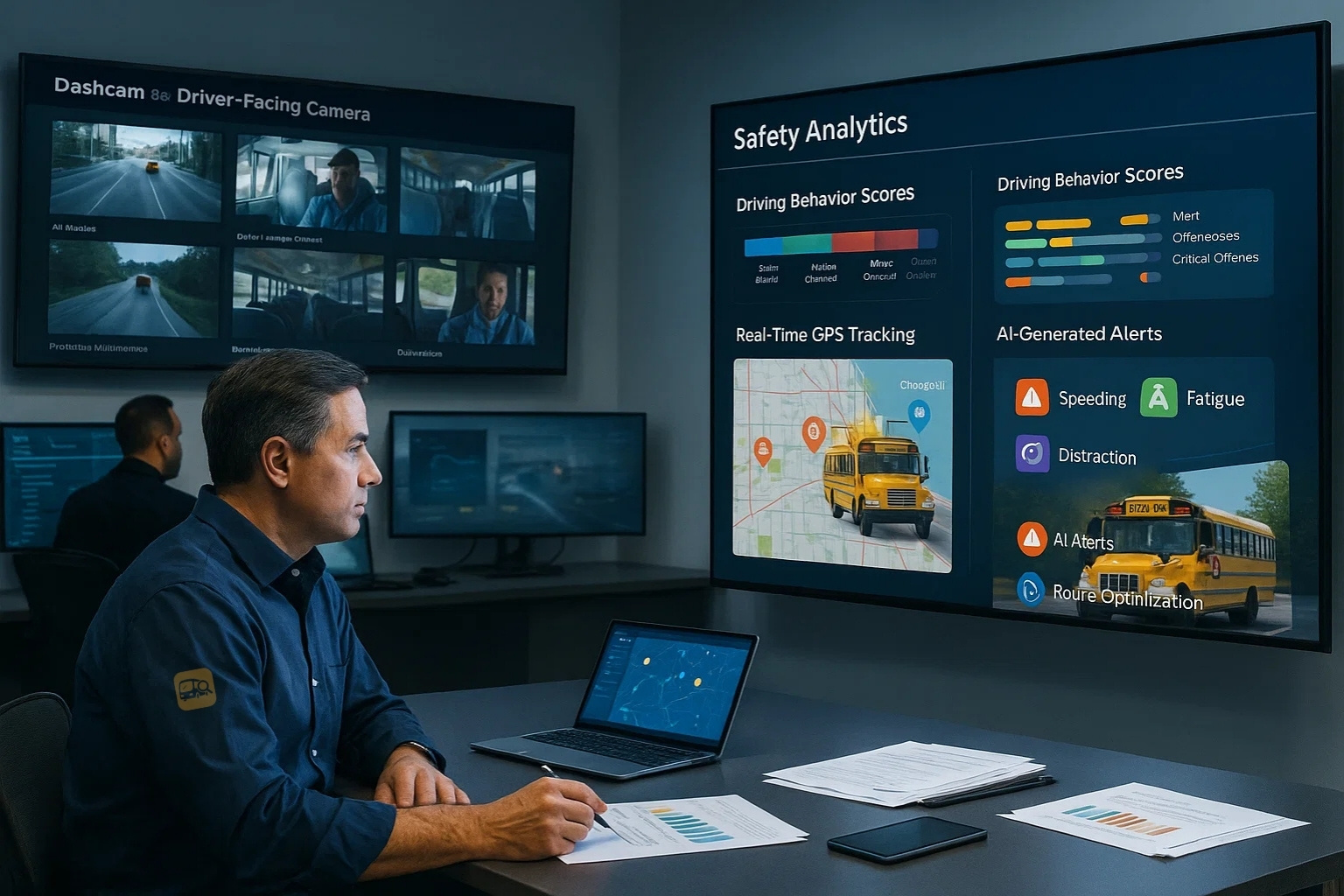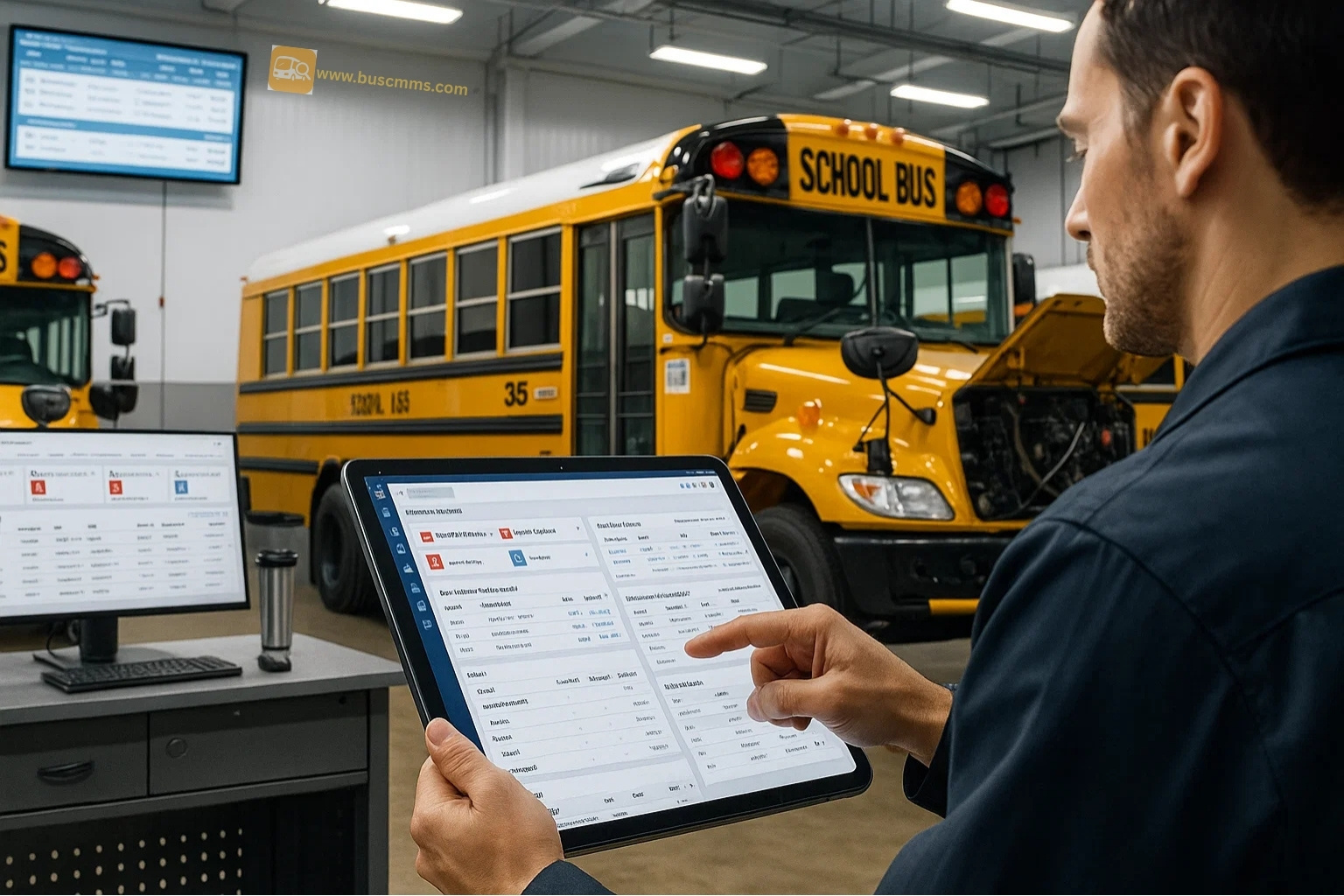In today's competitive transportation landscape, US manufacturing companies operating bus fleets face mounting pressure to optimize operational costs while maintaining service excellence. Fuel expenses represent one of the largest operational expenditures, often accounting for 30-40% of total fleet operating costs. This is where strategic fuel card integration becomes not just beneficial, but essential for maintaining competitive advantage.
Modern fuel card systems offer far more than simple payment convenience. When properly integrated into your fleet management ecosystem, they become powerful tools for cost control, operational efficiency, and data-driven decision making. This comprehensive guide explores proven best practices that leading fleet operators use to maximize their fuel card ROI and streamline operations.
Ready to Transform Your Fleet's Fuel Management?
Join hundreds of US manufacturing companies already saving 15-20% on fuel costs
Getting Started Book a Demo1. Choose the Right Fuel Card Provider for Your Fleet Size and Routes
Selecting the optimal fuel card provider is the foundation of successful integration. Not all fuel cards are created equal and what works for a regional carrier may not suit a national fleet operation. Consider these critical factors when evaluating providers:
- Network Coverage: Ensure the provider's network aligns with your primary routes. National providers like WEX, Fuelman, and Fleet One offer extensive coverage, while regional providers may offer better rates in specific areas.
- Real-time Data Capabilities: Look for providers offering instant transaction data, GPS location tracking, and driver identification features.
- Integration APIs: Modern fuel cards should seamlessly connect with your existing fleet management software through robust APIs.
- Pricing Structure: Compare transaction fees, monthly charges, and volume discounts. Some providers offer tiered pricing that benefits larger fleets.
- Security Features: Prioritize cards with PIN protection, purchase limits, and real-time fraud alerts.
2. Implement Robust Data Integration and Analytics
The true power of fuel cards lies in the data they generate. Successful fleet operators leverage this information to drive continuous improvement across their operations. Here's how to maximize your data integration:
Establish Real-time Data Feeds
Configure your fuel card system to automatically sync transaction data with your fleet management platform. This integration should capture:
- Purchase time, date, and location
- Fuel type and quantity
- Price per gallon and total cost
- Vehicle identification and odometer readings
- Driver identification details
Create Custom Analytics Dashboards
Develop dashboards that provide actionable insights at a glance. Key metrics to track include:
- Fuel consumption trends by vehicle, driver, and route
- Cost per mile comparisons across your fleet
- Unusual purchase patterns or potential fraud indicators
- Fuel efficiency benchmarks and outliers
- Regional price variations and optimal fueling locations
3. Establish Clear Usage Policies and Driver Training Programs
Even the most sophisticated fuel card system fails without proper user adoption. Developing comprehensive policies and training ensures consistent, secure usage across your organization.
Develop Written Fuel Card Policies
Your policy document should clearly outline:
- Authorized purchases (fuel types, additives, DEF fluid)
- Purchase limits and approval requirements
- Required documentation (receipts, odometer readings)
- Consequences for policy violations
- Lost or stolen card procedures
Implement Comprehensive Driver Training
Regular training sessions should cover both technical aspects and cost-saving strategies. Include modules on proper card usage, security protocols, and how individual actions impact overall fleet costs. Consider creating video tutorials for common procedures and making them accessible through your driver portal.
See How Easy Implementation Can Be
Our team helps you integrate fuel card systems seamlessly with your existing operations
Getting Started Book a Demo4. Leverage Advanced Security Features and Fraud Prevention
Fuel card fraud costs the transportation industry millions annually. Implementing multi-layered security protocols protects your bottom line while maintaining operational efficiency.
Enable Real-time Transaction Monitoring
Configure alerts for suspicious activities such as:
- Multiple transactions within short time frames
- Purchases exceeding vehicle tank capacity
- Transactions outside designated geographic areas
- Weekend or after-hours purchases without authorization
- Unusual product purchases or quantities
Implement Driver Verification Protocols
Require multiple authentication factors for fuel purchases. This might include driver PIN codes, vehicle numbers, and odometer readings. Some advanced systems now offer biometric verification or mobile app authentication for enhanced security.
5. Optimize Routes and Fueling Strategies Using Integrated Data
Fuel card data, when properly analyzed, reveals opportunities for significant cost savings through strategic route and fueling optimization.
Identify Optimal Fueling Locations
Use historical pricing data to map the most cost-effective fueling stations along your routes. Consider factors beyond price, including:
- Station accessibility for larger vehicles
- Wait times during peak hours
- Additional services available (maintenance, rest facilities)
- Loyalty program benefits and volume discounts
Implement Dynamic Routing Based on Fuel Prices
Advanced fleet management systems can automatically adjust routes based on real-time fuel pricing data. Even small detours can result in substantial savings when multiplied across your entire fleet operation.
Conclusion: Driving Fleet Excellence Through Smart Integration
Effective fuel card integration represents a critical competitive advantage for modern bus fleet operations. By following these best practices—from selecting the right provider to leveraging advanced analytics—you position your fleet for sustained operational excellence and cost optimization.
The manufacturing sector's transportation needs continue to evolve, demanding increasingly sophisticated management solutions. Fuel card integration serves as a cornerstone of modern fleet management, providing the data visibility and control necessary to thrive in today's market.
Remember, successful implementation is an ongoing process. Regularly review your fuel card program's performance, stay updated on new features and capabilities, and continuously refine your strategies based on data insights. The fleets that embrace this continuous improvement mindset will lead the industry in efficiency and profitability.
Transform Your Fleet's Fuel Management Today
Join industry leaders who've already revolutionized their fuel management systems. Our expert team is ready to show you how integrated fuel card solutions can drive immediate improvements in your fleet operations.
Getting Started Book a DemoFrequently Asked Questions
Q1: How long does it typically take to implement a fuel card system for a bus fleet?
Implementation timelines vary based on fleet size and integration complexity. For a standard fleet of 50-100 vehicles, expect 2-4 weeks for basic setup and card distribution, with an additional 2-3 weeks for full system integration and driver training. Larger fleets or those requiring custom API integrations may need 6-8 weeks for complete implementation.
Q2: What's the average cost savings potential from implementing fuel card integration?
Well-managed fuel card programs typically deliver 15-20% savings on overall fuel costs. This comes from multiple sources: 3-5% from network discounts, 5-8% from reduced fraud and misuse, 4-6% from route optimization, and 3-5% from improved driver behavior. For a fleet spending $500,000 annually on fuel, this translates to $75,000-$100,000 in savings.
Q3: Can fuel cards integrate with existing fleet management software?
Yes, most modern fuel card providers offer robust API integration capabilities. Popular fleet management platforms like Samsara, Geotab, and Fleetio have pre-built integrations with major fuel card providers. Custom integrations are also possible through REST APIs, allowing seamless data flow between systems for real-time monitoring and reporting.
Q4: How do fuel cards help with IFTA reporting and compliance?
Fuel cards automatically capture crucial IFTA data including purchase location, date, gallons purchased, and vehicle identification. This automated data collection eliminates manual entry errors and provides audit-ready reports. Many systems can generate IFTA reports directly, reducing quarterly reporting time by up to 75% and ensuring compliance accuracy.
Q5: What security measures protect against fuel card fraud?
Modern fuel cards employ multiple security layers including: PIN protection, real-time transaction alerts, purchase limits by dollar amount or gallons, time-of-day restrictions, geographic boundaries, and product category controls. Advanced systems use AI to detect unusual patterns and can automatically freeze cards showing suspicious activity. Regular driver education and clear usage policies further enhance security.








